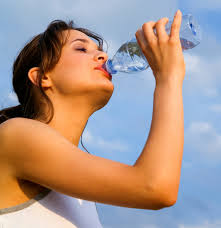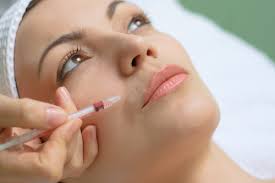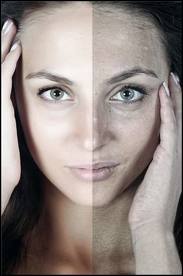Spring is just around the corner, and we will help you get your skin looking its best as you get ready to bare a lot more of it!
From the latest laser procedures and dermal fillers you can find at our office, to our extensive line of SkinCeuticals products, we’ve got the stuff you need.
We’re stuck in that crazy phase where winter is almost over, but it’s not quite spring. It’s kind of like when Britney Spears was not a girl, not yet a woman. One day it’s sunny, and the next day it’s snowing. One week it’s 60 degrees, the next week it’s polar vortex status, and the frequent changes absolutely wreak havoc on our skin. Sigh.

Reasons why Your Skin Needs Help!!:
If your skin is dry and dull: No matter how much the temperature drops, your skin still needs a boost in cell turnover.
Rule #1: Don’t stop resurfacing. I don’t mean abrasive scrubs—the appropriate and consistent “resurfacing” products will keep your skin looking dewy, hydrated, smooth, and glowing without creating microscopic tears and abrasions. Think retinoids and acid combinations such as glycolic, salicylic, and azaleic acids. If the weather is really cold, then dial down on frequency or strength, but do not stop resurfacing. I also recommend using a proteolytic enzyme once or twice weekly. Proteolytic enzymes are “smart exfoliators” since they only digest dead or diseased cells and cannot disturb healthy, newer cells. Even very sensitive skin types can tolerate proteolytic enzymes.
Rule #2: Adjust your hydration. Oftentimes, individuals simply trade up from a lighter moisturizer to one that is heavier. Think layers—when you layer clothing, instead of just one heavy outer garment, you stay warmer because more heat is trapped between the layers. Likewise, when you layer hydrators you trap more moisture, prevent moisture loss, and provide a more effective barrier against the elements. Try a lighter serum or cream that is packed with peptides and anti-inflammatories under a heavier barrier cream, topped by sunscreen.
If your skin is oily: The typical conundrum here is that the skin is oily, but actually looks dull and surface dry, primarily due to wind and colder temperatures. You’re not necessarily producing less oil, but it’s getting trapped in the dead surface layer and your skin appears duller and even your pores are more noticeable.
Rule #1: Exfoliate. Here again, the key is resurfacing. A resurfacing product, with the right combination of acids, will remove the dead surface skin without abrasion and keep your pores unblocked and looking smaller and more refined.
Rule #2: Do not abandon your acne meds. If you have breakouts, select a product that is non-drying and treats acne and aging at the same time. Once or twice a week an enzyme mask or a Retinol mask will provide further skin refinement and help make skin look dewy and luminous instead of simply oily.
If your skin has redness: Stop aggravating, start soothing!
Rule #1: Anti-inflame. Skin that has persistent periods of redness and little red capillaries may be experiencing mild to moderate rosacea. The causative factors in rosacea are varied and complex. However, it is believed that individuals with this tendency produce more of a type of inflammatory protein. The key here is to use products with lots of anti-inflammatory properties such as green tea, red tea, and ascorbyl palmitate.
Rule #2: Be gentle. Your skin also needs lots of barrier protection to prevent moisture loss and enable your skin to more effectively defend itself from transitional elements. Select products according to how dry or oily your skin is. Remember to lay lighter serums under more protective creams.
Rule #3: Sunscreen is an absolute must! The sun’s rays can still penetrate, even on the gloomiest day and UV rays equal inflammation, which sets up conditions that cause and exacerbate rosacea type tendencies.
After offering information about UV light and sun-protective behaviors, the two health-ed videos diverge: one describes the increased skin cancer risk of UV exposure and the other describes effects on appearance including wrinkles and premature aging. Which of these two videos do you think caused teenagers to use more sunscreen six weeks after it was shown?
“We see this anecdotally in the clinic. The teens who come in, often it’s because their parents are dragging them. A lot have undergone tanning or never wear sunscreen. You can tell that when we talk about the skin cancer risk, it doesn’t faze them. But when you talk about premature wrinkling and aging, they listen a little more closely,” says April W. Armstrong, MD MPH, investigator at the CU Cancer Center and vice chair of Clinical Research at the CU School of Medicine Department of Dermatology.
The current study aimed to quantify this observation. First, Armstrong and colleagues went to local high schools to recruit 50 subjects. All subjects completed questionnaires demonstrating their baseline knowledge about UV light and use of sun-protective behaviors. Then subjects were randomized into two groups, one of which viewed the health-based video that emphasized skin cancer risk, and the other of which viewed the appearance-based video that emphasized cosmetic changes due to UV exposure. Six weeks later, all subjects again completed questionnaires that showed the knowledge they retained and changes in sun-protective behaviors.
“Interestingly, we didn’t see any difference in teenagers’ knowledge — no matter if they had watched the health-based or appearance-based video, students learned and retained the same amount of information,” Armstrong says.
However, despite knowing the skin cancer risk from UV exposure, the group that had watched the health-based video showed no statistically significant increase in their sun-protective behaviors. On the other hand, the group that had been shown the appearance-based video reported a dramatic increase in the use of sunscreen.
“For teenagers, telling them UV exposure will lead to skin cancer is not as effective as we would hope. If our endgame is to modify their behavior, we need to tailor our message in the right way and in this case the right way is by highlighting consequences to appearance rather than health. It’s important to address now — if we can help them start this behavior when younger, it can affect skin cancer risk when older,” Armstrong says.
This information is brought to you courtesy of Dr. Mark Bishara and The Paragon Plastic Surgery & Med Spa in Mansfield and Southlake, TX
Facial wrinkles occur because people lose skin elasticity as they age, but there are also habits that can contribute to premature signs of aging. For example, forgoing sunscreen can cause sun damage, which leads to lines on the face. Repetitive motions, such as constantly squinting at the sun or sucking on a cigarette, can also make you more likely to develop wrinkles. In a recent article, The Inquisitr identified another potential cause of facial lines: water bottles.

Think before you drink
If you live in an area that has less-than-stellar tap water, drinking bottled water may seem like a no-brainer. There’s nothing wrong, nutritionally, with drinking H2O from a bottle, but the cosmetic dermatologist told the news source that it’s the repetitive motion that could cause lines to form around the mouth when they otherwise might not.
“We tell our patients, keep on drinking, it’s great for your body, it’s great for your health, it’s great for your skin,” a physician said in the interview. “Unfortunately, over time it either causes these lines or it aggravates them.”
Of course, there are ways to avoid this issue. Water purifiers may do the trick if you’d rather drink from the tap, and this will also save you money in the long run. You can pour your bottled water into a cup or drink through a straw, thus eliminating the lip-pursing motion.

A cosmetic solution
Unfortunately, for those of us who have been drinking out of water bottles for years, this news may come a bit late in the game. If wrinkles have already formed, you can discuss other options with a plastic surgeon. Facelifts and deep chemical peels offer long-term results that can make you appear younger, while dermal fillers can help fill deep wrinkles and reshape the facial contours.
While sun damage doesn’t happen overnight, it can seem like it visibly affects the skin in a rather short period of time. The more the skin is exposed to the sun, the more the collagen and elastin in the deeper layers is broken down, giving less support to the underlying muscles and the skin’s surface. As a response mechanism, the skin tries to protect itself from the damage, in turn thickening as a means of regeneration.

Treat sun-damaged skin at home:
Peptides and vitamin A need to be used consistently to help strengthen the skin and improve its texture. Retinol is key since it sheds the top layer of skin and strengthens it from inside out. Use a Retinol regularly, because it keeps the skin in repair mode, creating new collagen and exfoliating the surface.
Free radical-fighting ingredients like green tea and vitamins C and E will help safeguard the skin from future damage.
Protection and maintenance are vital-once sun-damaged skin has been transformed, you don’t want it to regress. It is recommended to wear a sunscreen with ingredients that contain either physical or chemical blockers and broad-spectrum products, which provide protection from all UV rays. Also use antioxidants and a moisturizer.

Treat sun-damaged skin professionally:
Laser and light-based treatments, like Intense Pulsed Light (IPL) and both ablative and nonablative resurfacing procedures, work to reinstate the skin. IPL can help eliminate brown and red spots on the face and body. A downtime-free treatment, although several sessions are required, IPL helps to rejuvenate the skin so that it looks younger and fresher.
Treatments that tackle sun-damaged skin, including chemical peels, can improve the skin, too. But, if not done properly, they can cause more harm than good. Acid-based peels buffer the skin, making it more sensitive to the sun.
Fractional lasers, like Fraxel, get rid of discoloration while improving the skin’s texture. Instead of employing light, fractional resurfacing lasers create microscopic wounds in the skin-as the skin heals, the sun-damaged areas scab and flake off, and collagen is purportedly increased.
Interval treatments will be needed over time, because nothing lasts forever- not even the results of lasers. Re-treatments every now and then will help maintain the longevity of your results for healthier skin. Please call our office at (817) 473-2120 for more information and questions on laser treatments and skin care. You can also visit our website at www.MarkBisharaMD.com. Dr. Bishara and The Paragon Med Spa provide a wide range of cosmetic procedures to help patients look and feel their best.

While some learn to love those tiny brown spots on the tip of the nose, cheeks and shoulders, others look for anything to fade freckled skin. Thankfully, you can lighten unwanted freckles and spots instead of just covering them up with makeup. And, obtaining brighter, smoother, spot-free skin may be easier than you think. At the office of Dr. Mark Bishara we want to educate our patients about proper skin care and help them improve the health and appearance of their skin.
Protect and Prevent
With a medical name like ephelides, it’s no surprise that freckles get a bad rap. While “simple freckles,” the tiny brown spots on your skin you have had since birth, are harmless, lentigines, or “sunburn freckles,” need to be taken more seriously. Usually larger in size, more red in color and with an irregular border, these spots are sure signs of sun damage. No matter how old you were when you first noticed your freckles, sun exposure can only make them darker and greater in number. The easiest way to prevent freckles from forming is by using sunscreen. “I recommend applying sunscreen with at least an SPF of 30,” says New York and Miami dermatologist Fredric S. Brandt, MD. “No product will effectively lighten skin without the use of sunscreen on a daily basis.”

On the Bright Side
Over-the-counter brighteners can help to even out freckles and spots for more evenly toned skin. The SkinCeuticals line of skin care products offers 3 different product categories to: Prevent, Protect and Correct. Many of their products help to reduce the appearance of spots, leaving the skin looking luminous and glowing. For more information on the SkinCeuticals products and to find out the right skin care regimen for your skin type and skin condition please visit their website at www.SkinCeuticals.com. Our office offers the SkinCeuticals skin care line and can also help you choose the right product for you.
Zap Away
For serious long-term freckle fading, laser resurfacing lightens and retexturizes. Unlike chemical peels and microdermabrasion, which just exfoliate, pigment-specific lasers, like the Alma laser systems, specifically destroy pigment in the epidermis and dermis to eliminate discoloration with minimal side effects. Fractional resurfacing lasers poke tiny holes into the skin to deliver a dose of controlled heat to the deeper layers, eliminating freckles from the inside out. Not a laser, but similar in terms of results, Intense Pulsed Light (IPL) uses broadband light to diminish freckles. Not all lasers are alike, so it’s important to diagnose your skin accurately prior to treatment.
Please visit our website at www.MarkBisharaMD.com or call us at (817) 473-2120 for more information.





